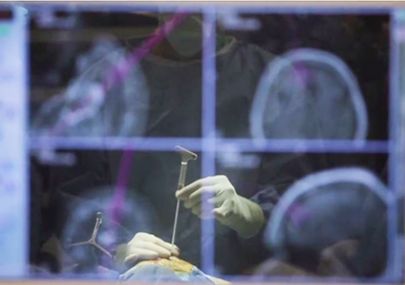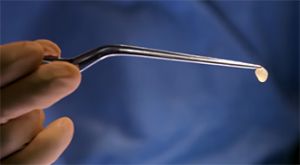Endoscopic surgery has truly revolutionized the surgical management of colloid cysts. Their central and deep location within the third ventricle has historically demanded a great degree of surgical skill and demand on the patient. Until the last two decades the treatment options for patients with colloid cysts included a traditional craniotomy (opening the skull for removal of the cyst), stereotactic cyst aspiration, or placement of a shunt for hydrocephalus.

Removing a colloid cyst through a traditional craniotomy is a lengthy procedure with disproportionate risks compared with endoscopic procedures. In some cases, patients could avoid open surgery by undergoing stereotactic aspiration of the cyst, but this procedure carries a near-universal risk of recurrence. Placement of a shunt for hydrocephalus was a procedure used to treat the symptoms, but it never addressed the underlying problem.
The need to reduce risk helped spur the development of a minimally invasive endoscopic procedure to remove colloid cysts. Great improvements in endoscopic equipment over the last two decades have helped make this endoscopic surgery the new standard for colloid cyst resection.
In the endoscopic procedure, the neurosurgeon needs just a small hole (12 to 14 mm in diameter) for endoscopic access. The procedure is coupled with stereotactic planning to ensure optimal trajectory and target localization. The incision measures about an inch, and it’s hidden in the hairline. The endoscopic port measures less than a quarter-inch in diameter. These tiny instruments are then used to extract the cyst and its contents from the third ventricle. This minimally invasive endoscopic procedure is brief (one to two hours) and usually requires just a one-day hospitalization. Plenty of published evidence exists that supports the endoscopic procedure as being advantageous compared with a traditional craniotomy. (See video: Endoscopic Surgery for Colloid Cyst)

The procedure requires the neurosurgeon to have advanced training in endoscopic techniques, and studies have shown that patients have better outcomes the more often their surgeon has performed a procedure. At Weill Cornell Medicine Neurological Surgery, Dr. Mark Souweidane has performed this endoscopic procedure hundreds of times, making him one of the world’s leading experts on colloid cysts. (See Doctors Who Treat Colloid Cysts.)
Reviewed by: Umberto Tosi, MD
Last reviewed/last updated: September 2024
Photographs by John Abbott
Illustration by Thom Graves, CMI